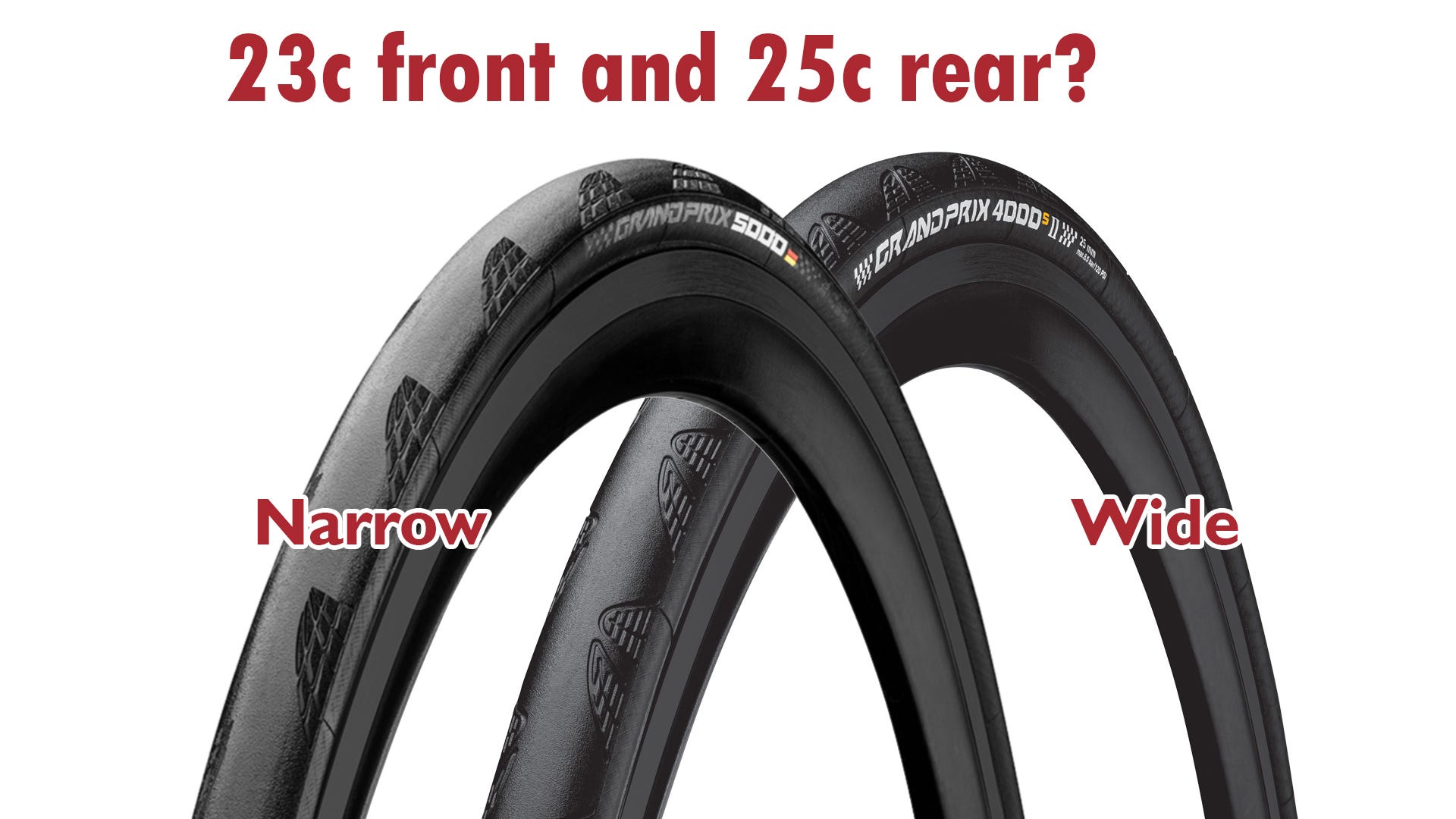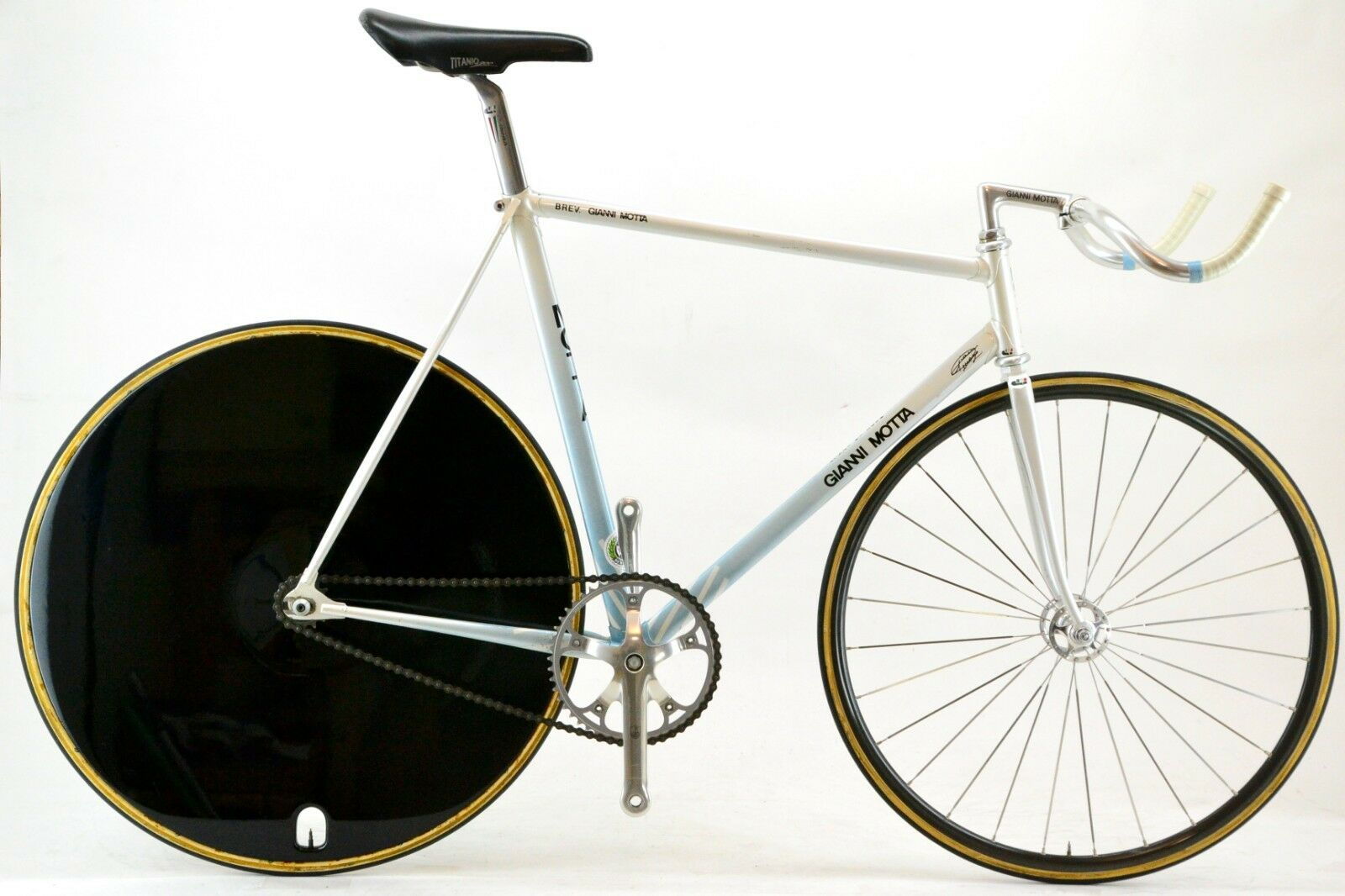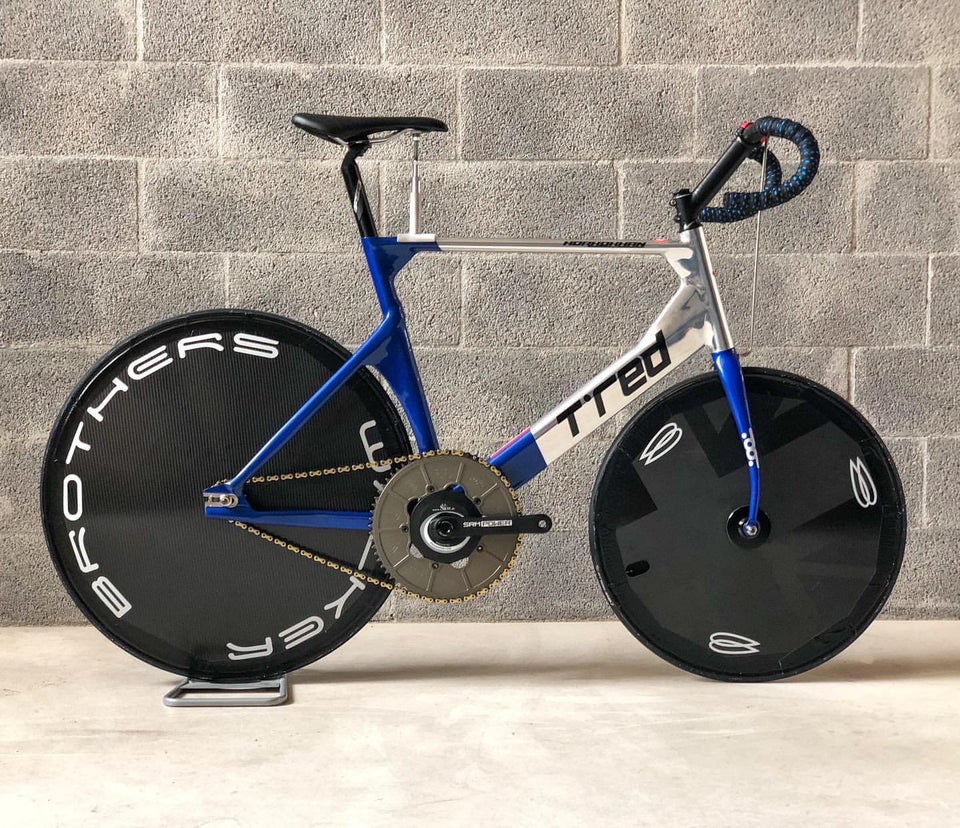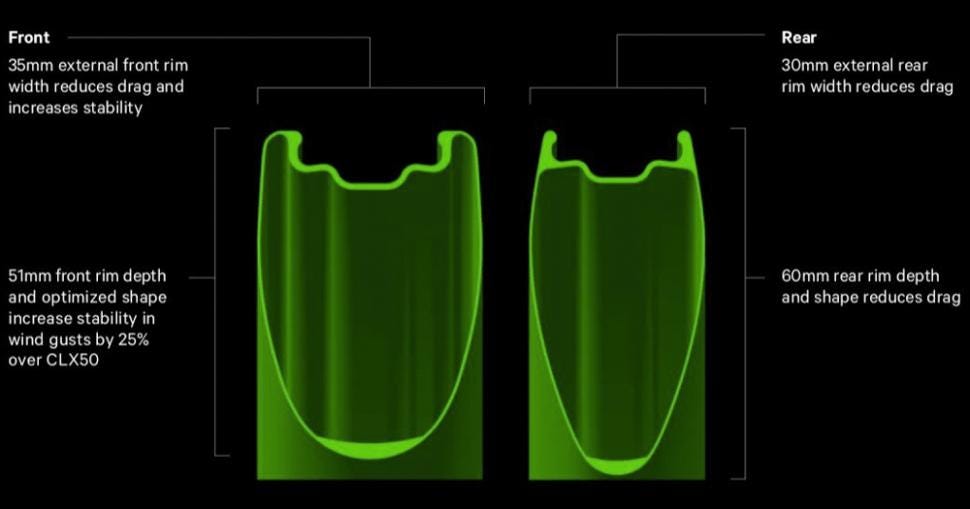One of my favourite videos is our surface calculator (watch here) ; it never got many views but it helps clarify your tyre pressure on any surface conditions both in terms of tyre size and tyre pressure. I had never seen this anywhere else! In response, a viewer Tunying B asked:
“I saw some bikes that uses 23c on front and 25c on the rear is there any benefits of using different size?”

So should you go narrow-wide!? Like a lot of cycling questions, this looks simple, but ends up complicated at least if you want to delve into high accuracy of the benefits of 23c front & 25c rear vs 25c front and rear (or 23c front and rear). In this comparison we are going to stick with like-for-like tyres eg continental GP5000 clincher 25c vs 23c.
Headline differences
First let’s do the obvious benefits. If you install a like-for-like 23c on just the front wheel then you will gain based on this table from the awesome bicyclerollingresistance.com

So you will gain……
- About 15g
- A narrower tyre by about 2mm
- Less tread by about 0.2mm
So what this means in practice is you save a tiny bit of weight on the front, which means the front feels a touch more responsive, a tiny bit faster (almost zero in reality) to accelerate and a tiny bit quicker to climb. BUT you loose a little bit of grip because there is less surface in contact with the road and in general a narrower tyre is pumped harder at the same weight rider so it doesn’t deform as well over a rough road causing impedance losses to be higher. So on a rough road a wider (not huge, just a bit) is likely to have big gains in CRR. How much? You can see this in our surface calculator here

BUT wait what about on a normal smooth to mixed tarmac surface where impedance rolling resistance isn’t king? Here we need to break out the calculator. Which one? This one (link). The pressure calculator!

Calculator Results
For 25c front & rear | 80kg rider | normal road |zipp 404 | 40kph
rolling resistance = 34.5watts
Aero losses = 19.2watts
Total = 53.7watts of losses attributable to the tyres (ok and the wheels!)
………………..now let’s do the 23c tyre (pair)…….
For 23c front & 23c rear | 80kg rider | normal road |zipp 404
rolling resistance = 34.5watts = same**
Aero losses = 17.7w
………………..now let’s do the asymmetrical combination
For 23c front & 25c rear | 80kg rider | normal road |zipp 404
rolling resistance = 34.5watts = same **
Aero losses = 19.2.-17.7 * 2/3 = 1watt***
There is approx a 1 watt in aero gains at zero to 5deg yaw. Its ***2/3 because 2/3 of the aero drag is caused by front wheel vs rear (the rear shelters behind).
However, there is a significant problem which is pressure. ** You see the rolling resistance CRR is only the same across diff sizes IF you carefully adjust the pressure for (a) front rear balance and (b) tyre size itself.
This was in this illustration we made……

But wait there is more…….assuming you are sitting on a normal road bike (not TT) than weight is distributed around 45:55% according to our own measurements on two bathroom scales! Which means you have to adjust the front rear pressure difference quite a bit, around 15psi to maintain optimal CRR. If you get this wrong, you lose around 2–3watts….so that 1 watt aero asymmetrical gain can become a 2watt loss.
So what about the a small adjustment required for tyre size itself? In order to maintain optimal CRR than a 23c tyre needs to be about 4psi higher than a 25c tyre. I explained this here (well I tried to!). If you don’t make any PSI adjustment for even 1 tyre size change you will loose around 0.5–0.75w……so again that 1watt aero gain becomes a 0.25w gain only (at zero yaw).
So as you see it’s a bit of a minefield in terms of tyre pressures and easy (very easy) to go wrong and wipe out your gains! Also I have not talked about matching the tyre and the rim (eg the 105% rule or similar); and also the effect of higher yaws…….lets just say the tyre must aerodynamically match the rim when the yaw is >5deg which is most of the time for normal riders.
How should you match the tyre and the rim/wheel? I guess that’s a story for another day, and another story without a quick answer!
ps. Lets not forget wheels….should you go with an asymmetrical wheelset?
I nearly forgot but you can also go asymmetrical on your wheels and actually this can make a lot of sense.
Asymmetrical could apply to the wheel size, or width or depth!
Quintana rode a 35mm front and 50mm rear Campagnolo Bora Ultra wheel set in the pro tour like the Tour de Suisse. Remember that front wheels and subject to steering forces which causes sudden pressure spikes ie instability of the front wheel under windy conditions. Manufacturers are beginning to recognize this. A deeper depth rear wheel provides more aero benefit…actually 60% of the aero benefit comes from the front wheel but thats still 40% remaining on the rear. And yes there is a small weight gain, but this is not the major play here.
Mismatched front and rear wheels became a thing in MTB in 2017/2018. UCI. relaxed previous rules that bikes must have wheels of equal size front and rear for Downhill and Enduro racing anyway. And the neat observation is 27.5″ with 3inch fat tyre is the same outer diameter as a 29er with 2.3inch. Mix and match you get better rollover up front and better grip at the rear. Starts to make sense.

But what about road bikes?
“Funny bikes” had odd sized wheels in the 70s and 80s. The reason was aerodynamics.
Although these are out of fashion the science is solid.

At some point these will make a comeback……

and on road bikes different rim depths make sense

Off-the-Peg Asymmetry
In the past Reynolds used to offer an Assault/Strike combo wheel set with a 41mm deep front and 62mm deep rear wheel. Chuck Peña from PEZ cycling found that a AON TLR 38mm/58mm was 0.2mph faster than AON TLR 38/38mm (link). This week, Specialized joined the party with their Roval Rapide CLX with “fastest all-around road wheels in the world” claim. Ignoring this unsubstantiated claim (which is condition specific anyway) the Rapide CLX wheels feature differing rim depths: 51mm up front and 60mm at the rear and differing widths: front rim is 35mm externally, compared with a still sizeable 30.7mm external width for the rear rim. Roval claims that the Rapide CLX’s rim profiles make the wheelset 25% more stable than the existing CLX50s and yet with less drag than most 65mm deep wheelsets! Amazing if true!

